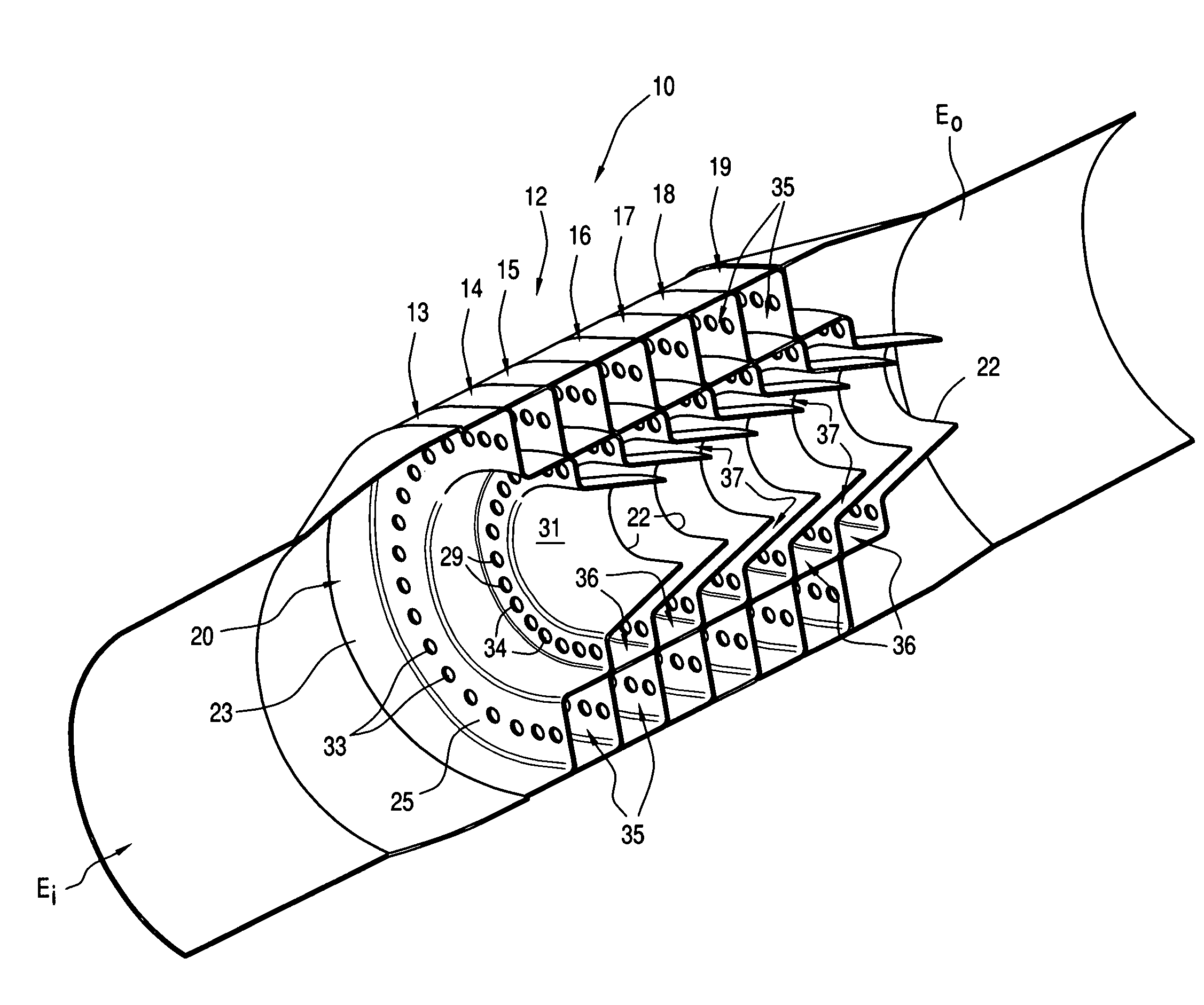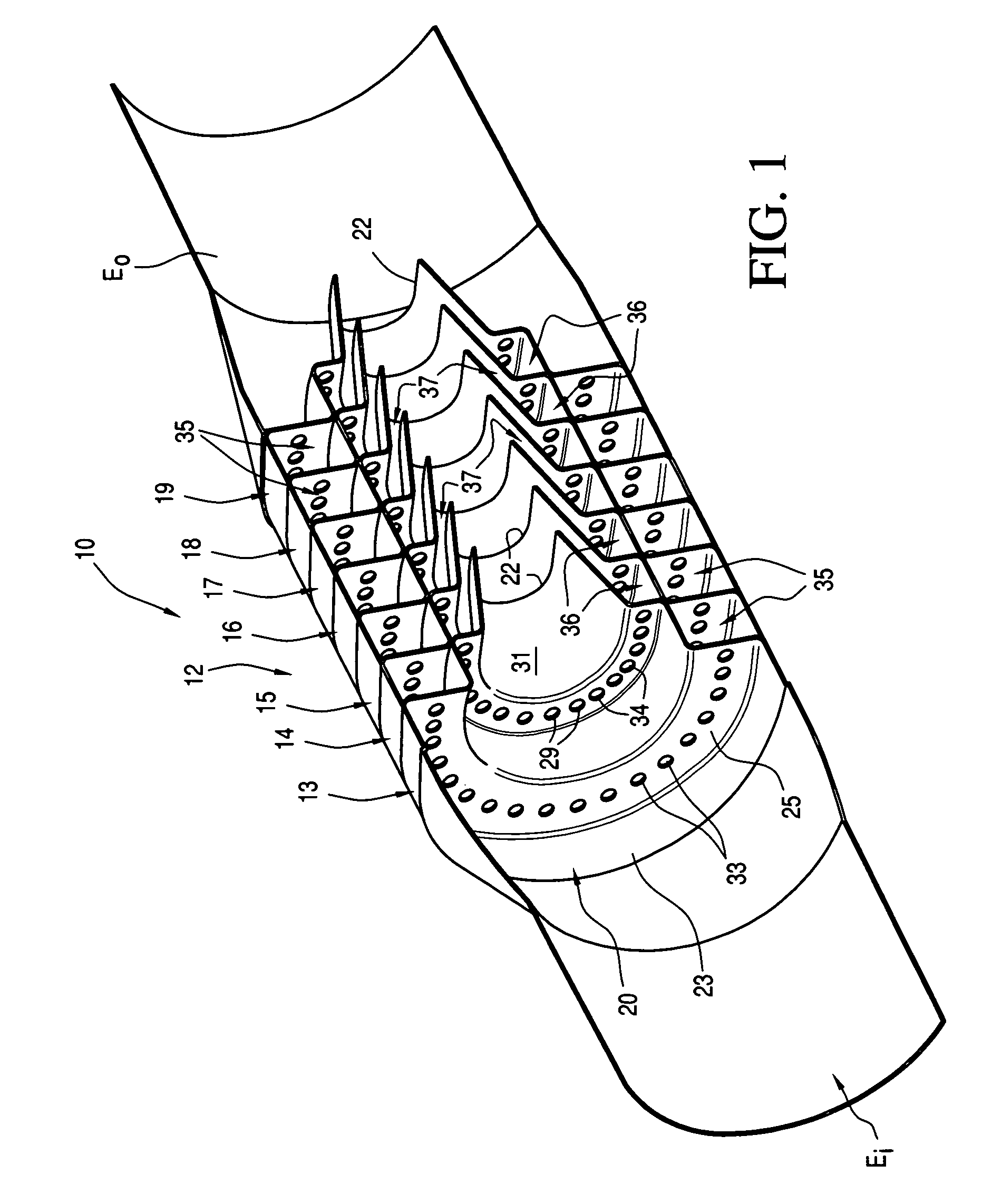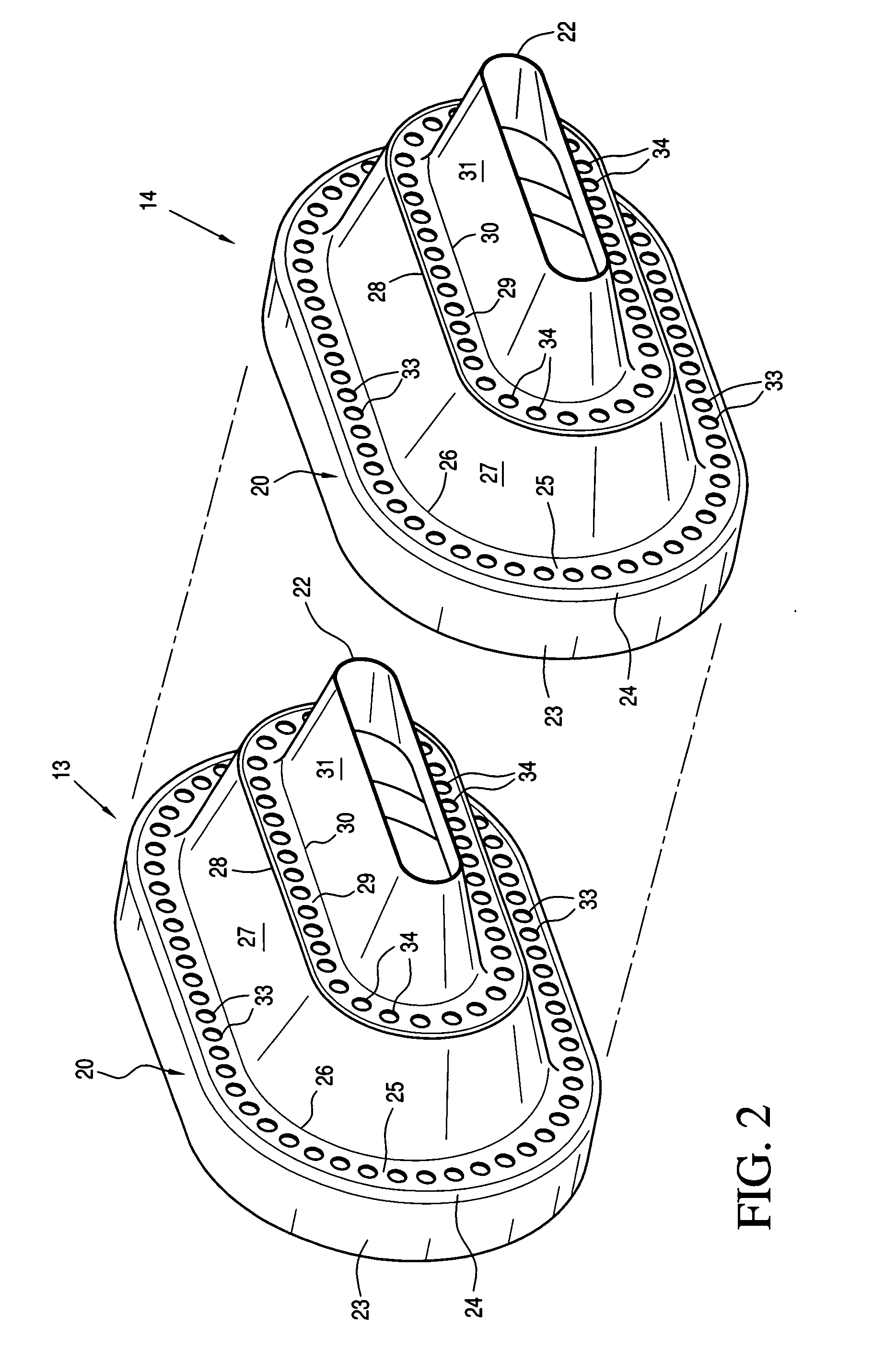Venturi muffler
- Summary
- Abstract
- Description
- Claims
- Application Information
AI Technical Summary
Benefits of technology
Problems solved by technology
Method used
Image
Examples
Embodiment Construction
[0032]A venturi muffler constructed in accordance with this invention is fully illustrated in FIG. 1 of the drawings and is generally designated by the reference numeral 10. The venturi muffler 10 includes an exhaust inlet Ei, an exhaust outlet Eo, and therebetween a medial sound damping or sound attenuating section 12 which dampens, reduces, attenuates or muffles the noise caused by the sudden expansion of internal combustion chamber exhaust gasses of a conventional internal combustion engine (not shown) connected to the exhaust inlet Ei.
[0033]The sound damping section 12 is, for illustrative purposes, formed by seven vacuum or partial vacuum-forming / venturi-forming segments 13 through 19, though more or less such venturi-forming segments may be utilized depending upon the particular application. The venturi-forming segments 13 and 14 of FIGS. 1 through 3 will be described in detail and the description thereof is equally applicable to the remaining venturi-forming segments 15 throu...
PUM
 Login to View More
Login to View More Abstract
Description
Claims
Application Information
 Login to View More
Login to View More - R&D
- Intellectual Property
- Life Sciences
- Materials
- Tech Scout
- Unparalleled Data Quality
- Higher Quality Content
- 60% Fewer Hallucinations
Browse by: Latest US Patents, China's latest patents, Technical Efficacy Thesaurus, Application Domain, Technology Topic, Popular Technical Reports.
© 2025 PatSnap. All rights reserved.Legal|Privacy policy|Modern Slavery Act Transparency Statement|Sitemap|About US| Contact US: help@patsnap.com



